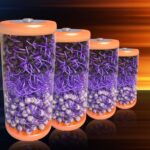 Researchers at the National Renewable Energy Laboratory (NREL) have introduced a clever tweak to perovskite solar cell design. Instead of relying on the usual fullerene layer, they swapped it out for an ionic salt, nudging lab efficiency up to 26.1% compared to the standard 25.5%.
Researchers at the National Renewable Energy Laboratory (NREL) have introduced a clever tweak to perovskite solar cell design. Instead of relying on the usual fullerene layer, they swapped it out for an ionic salt, nudging lab efficiency up to 26.1% compared to the standard 25.5%.
This simple change not only boosts performance but also means the cells stand up to the test of time. In one trial, cells ran for 2,100 hours at 65°C (149°F) while retaining 26% efficiency with just a 2% drop. Another test showed comparable performance at 85°C (185°F) over 1,500 hours with around a 5% efficiency loss.
The secret lies in optimising the electron transport layer (ETL). Fullerene C60 has been the go‐to material, yet its molecular structure sometimes limits stability. By transforming C60 into an ionic salt called CPMAC, the team boosted the mechanical strength of the ETL threefold, paving the way for tougher, longer-lasting solar cells.
Dr Kai Zhu, a senior scientist at NREL, summed it up well: the improvement was as surprising as it was promising. If you’ve ever been worried about the long-term viability of new solar technologies, this breakthrough suggests that perovskite solutions might soon be both efficient and durable enough for everyday use.








